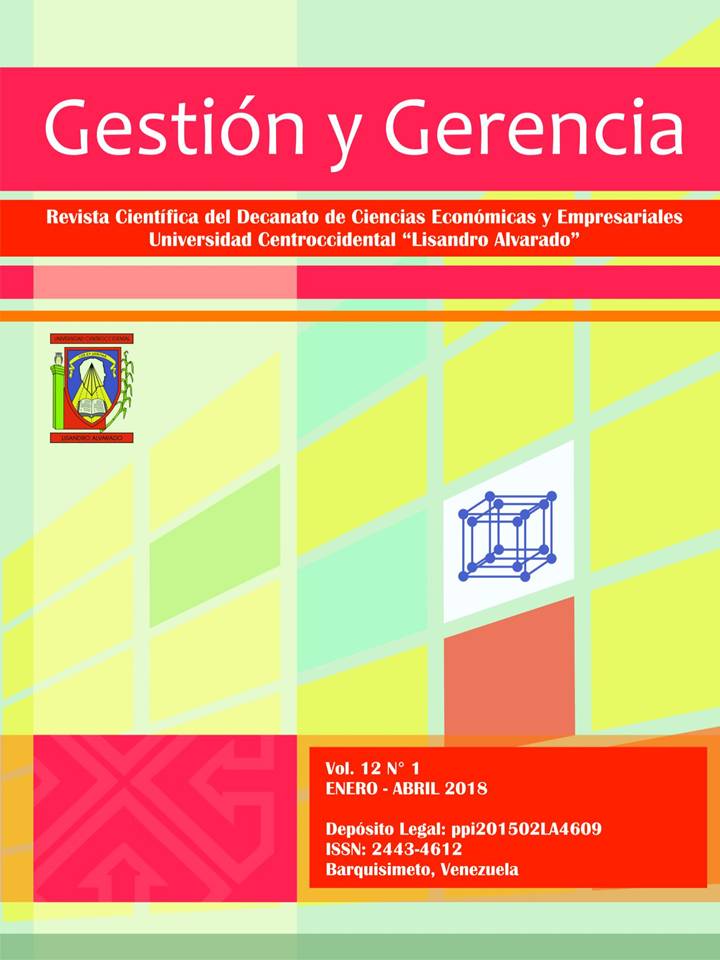Identification of organizational practices for the accumulation of knowledge and information management tools
Keywords:
accumulation of knowledge, acquisition of external knowledge, internal knowledge creation, knowledge management, information managementAbstract
The objective of the research was to identify the organizational practices for the accumulation of knowledge and the information management tools that foster their development in organizations. For this, a methodology was designed based on the systematic review and analysis of content, which would allow the relevant identification of knowledge accumulation practices and information management tools. Related to the organizational practices for the accumulation of knowledge, 79 practices were initially identified, which were consolidated into 17 for the internal creation of knowledge and 12 for the acquisition of external knowledge. About information management tools, 58 were initially identified, which were consolidated into 4 under the content approach and 14 under the technology focus as such. The investigation allowed to conclude that the capacity of accumulation of knowledge, understood as the internal creation of knowledge and the acquisition of external knowledge of organizations, is supported through its practices, techniques and information management tools that promote its construction and developmen
Downloads
References
Becheikh, N., Landry, R., y Amara, N. (2006). Lessons from innovation empirical studies in the manufacturing sector: A systematic review of the literature from 1993-2003. Technovation, 26, 645.
Claycomb, C., Drogue, C., y Germain, R. (2001). Applied Process Knowledge and Market Performance: The Moderating Effect of Environmental Uncertainty. Journal of Knowledge Management, 5(6), 273.
Cohen, W. M., y Levintal, D. A. (1989). Innovation and Learning: The two faces of R&D. The Economic Journal, 99(397), 569-596.
Egbu, C. O., y Botterill, K. (2002). Information technologies for knowledge management: their usage and effectiveness. ICT for Knowledge Management in Construction, 7(No especial), 125-137.
Fores Julián, B. (2011). Prácticas organizativas, capacidades dinámicas y desempeño económico. Castellón de la plana: Universidad Jaime I. Facultad de Ciencias Jurídicas y Económicas. Departamento de Administración de Empresas y Marketing.
Grant, R. M. (1996). Prospering in Dynamically-Competitive Environments: Organizational Capability as Knowledge Integration. Organization Science, 7(4), 384-385.
Hult, T. M. (2006). Knowledge as a strategic resource in supply chains. Journal of Operations Management, 24(5), 460.
Kautz, K., y Mahnke, V. (2003). Value Creation through IT-supported Knowledge Management? The Utilisation of a Knowledge Management System in a Global Consulting Company. Knowledge Management, 6, 75-88.
Kitchenman, B. (2004). Procedures for Performing Systematic Reviews. Keele University Technical Report, 33(TR/SE-0401), iv.
Lambe, P. (2011). The unacknowledged parentage of knowledge management. Journal of Knowledge Management, 15(2), 177-192.
Lee, J.-H., y Kim, Y.-G. (2001). A stage model of organizational knowledge management: a latent content analysis. Expert Systems with Applications, 20(4), 300.
Maier, R. (2005). Modeling Knowledge Work for the Design of Knowledge Infrastructures. Journal of Universal Computer Science, 11(4), 429-451.
Martín Sierra, C. (2011). Gestión de recursos humanos y retención del capital humano estratégico: Análisis de su impacto en los resultados de empresas innovadoras españolas. 417. Valladolid: Universidad de Valladolid. Facultad de ciencias económicas y empresariales, Departamento de organización de empresas y comercialización e investigación de mercados.
Rao, M. (2005). Overview: The Social Life of KM Tools. Knowledge Management Tools and Techniques: Practitioners and Experts Evaluate KM Solutions, págs. 1-4, 438.
Santos, F. M. (2003). The coevolution of firms and their knowledge environment: Insights from the pharmaceutical industry. Technological Forecasting and Social Change, 70(7), 687-715.
Schlogl, C. (2005). Information and knowledge management: dimensions and approaches. Information research., 10(4). Obtenido de http://informationr.net/ir/10-4/paper235.html
Serenko, A. (2010). A scientometric analysis of knowledge management and intellectual capital academic literature (1994-2008). Journal of Knowledge Management, 14(1), 3.
Tomás Miguel, J. V., Exposito Langa, M., Ferrandiz Carbonell, M., y Capó Vicedo, J. (2005). El capital intelectual como activo estratégico en la sociedad del conocimiento. Una aproximación a su valoración mediante la aplicación del modelo Technology Broker en una empresa del sector cosméticos . Congreso de Ingeniería de Organización , 1-8.
Tranfield, D., Denyer, D., y Smart, P. (2003). Towards a Methodology for Developing Evidence Informed Management Knowledge by Means of Systematic Review. British Journal of Management, 14(3), 214-215.
Tripsas, M. (1997). Surviving Radical Technological Change through Dynamic Capability: Evidence from the Typesetter Industry. Industrial & Corporate Change, 6(2), 341-377.
Tyndale E, P. (2002). A taxonomy of knowledge management software tools: origins and applications. Evaluation and Program Planning, 25(2), 183-190.
W. Chan, K., y Mauborgne, R. (1997). Fair Process:Managing in the Knowledge Economy. Harvard Business Review, 75(4), 65-76.
Williams, B. J., y Carver, J. C. (2010). Characterizing Software Architecture Changes: A systematic Review. Information and Software Technology, 52(1), 35.
Wu, W.-L., y Yeh, R.-S. (2011). Managing effective knowledge acquisition in outsourcing alliances: A supplier's perspective. African Journal of Business Management, 5(5), 1755-1762.
Young, R. (2010). Knowledge Management Tools and Techniques Manual. Asian Productivity Organization, pág. 94.
Zack, M. H. (1999). Developing a Knowledge Strategy. California Management Review, 41(3), 125-145
Published
How to Cite
Issue
Section
Derechos del/de autor/es a partir del año de publicación
Esta obra está bajo la licencia:
Creative Commons Reconocimiento-NoComercial-CompartirIgual 4.0 Internacional (CC BY-NC-SA 4.0)
Las opiniones expresadas por los autores no necesariamente reflejan la postura del editor de la publicación ni de la UCLA. Se autoriza la reproducción total o parcial de los textos aquí publicados, siempre y cuando se cite la fuente completa y la dirección electrónica de esta revista. Los autores(as) tienen el derecho de utilizar sus artículos para cualquier propósito siempre y cuando se realice sin fines de lucro. Los autores(as) pueden publicar en internet o cualquier otro medio la versión final aprobada de su trabajo, luego que esta ha sido publicada en esta revista.




